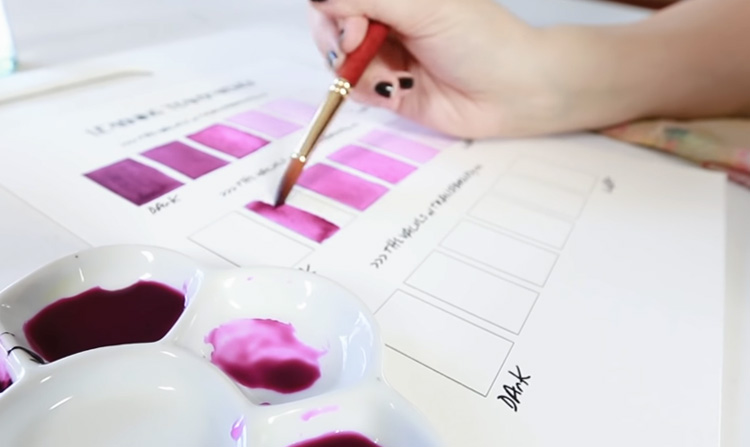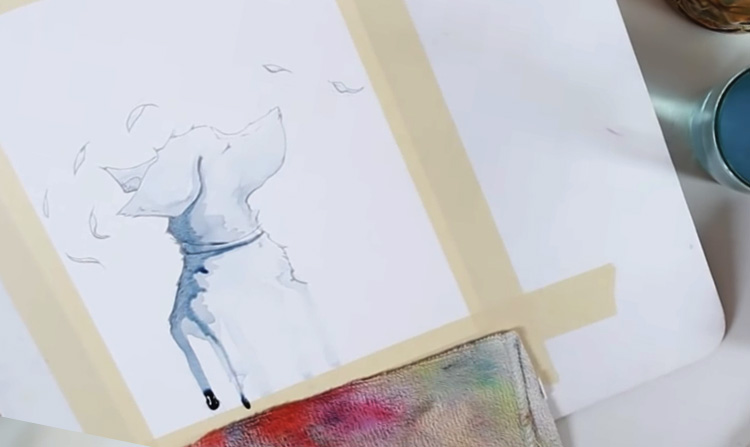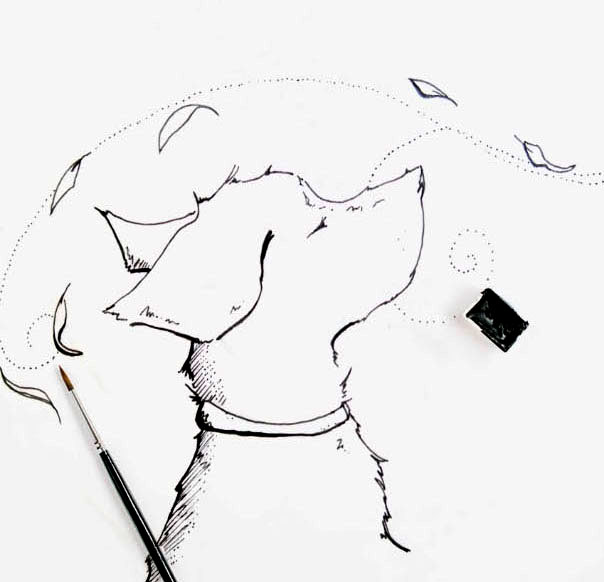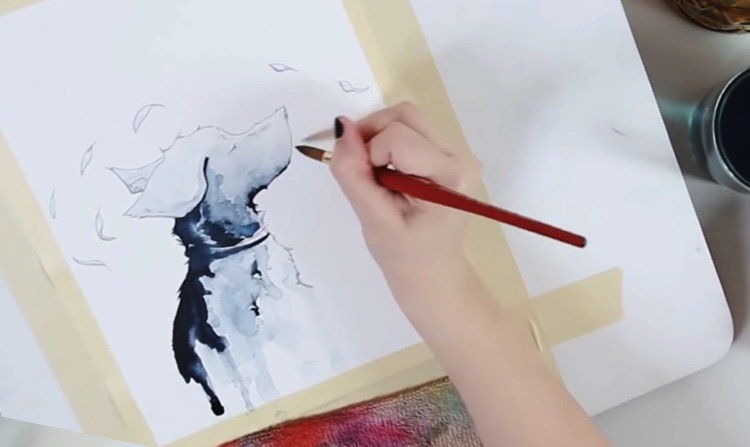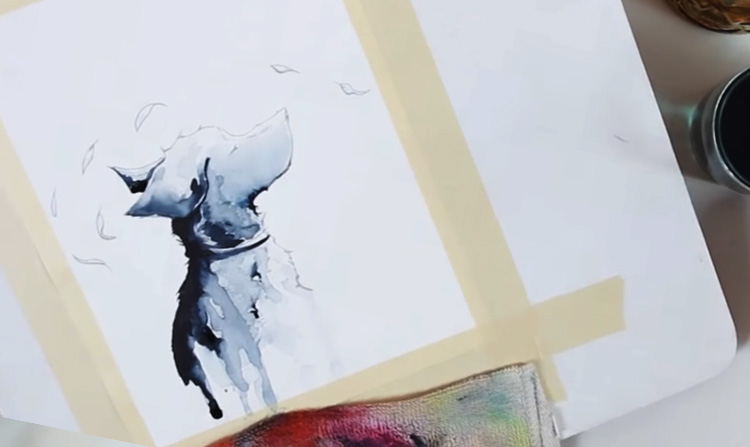How well do you know your paint? Get to know the colors on your palette with these easy watercolor painting tips, where you'll learn about transparency and values through a fun exercise for beginners. Thanks for sharing your practical knowledge about watercolor painting, Carrie!
Materials used:
- 2 sheets of cold press watercolor paper (140lb, size 9" x 12")
- Palette for mixing paint
- Container with clean water
- Dry rag or paper towel
- Artist's or masking tape
- 2B or HB pencil
Winsor & Newton's Cotman watercolors
- Purple Lake
- Indigo
Brushes
- Any round brush (no. 12)
Tip #1: Get the Hang of Transparency
The first tip has to do with an important quality of watercolor paint: transparency. An easy watercolor painting exercise you can do is to familiarize yourself with the transparent quality of your paints by doing a value study. First, draw a set of six boxes on your watercolor paper. You can prepare as many rows as you like, especially if you have a lot of time to practice. Consider each row as one round of practice in which the last box will contain the lightest value while the first box will contain the darkest. Next, prepare your paint. Add clean water in one well of your paint palette, and squeeze out Purple Lake into another well.
To do the exercise, start with the lightest value you can mix by adding a dot of paint into the well with clean water. Use a no. 12 round brush to dilute the paint and fill in the box at the end of your first row. For the next few boxes, gradually add more paint to the water to strengthen its value.
When you reach the last box, add a bit of water to the well with the paint instead, so that you can achieve the darkest possible value for that color. You can use watercolor pans instead of paint from a tube, but keep in mind that it may take more effort to get the pigment to its darkest value.
When you're done with the first row, repeat the process however many times you like. The great thing about this exercise for beginners is, in addition to understanding your values, it also doubles as practice for doing a flat wash, which is when you lay down your paint evenly on the page.
Tip #2: Do an Easy Watercolor Painting in Monochrome
For the next three tips, we're doing an easy watercolor painting of a dog! Tip no. 2 continues where the previous tip left off and is another great way to familiarize yourself with your paint. It's a simple exercise: create a monochrome painting!
This means limiting yourself to one color and mixing it with different amounts of water to produce different values. This is a great way to deepen your understanding of what you learned from the previous tip, because you now have to figure out how to use transparency to make your watercolor ideas work. Before you paint, use a pencil to sketch out a quick drawing of a dog, or any subject matter.
It helps if you have a reference! Then, tape down your watercolor paper with artist's or masking tape to prevent it from buckling. Next, load your round brush with diluted Indigo and start with a loose, light layer of paint. If there's a lot of moisture on your paper, let the layers dry before adding another layer.
Begin with your lightest layers first, then gradually build up darker layers on top. This is what Carrie's dog sketch looks like:
Tip #3: Save The White!
Tip no. 3 is crucial to creating dramatic watercolor ideas: don't forget to save your whites! A common misconception in watercolor painting is that you have to cover the whole paper in paint. This is not true; in fact, the white of the paper can become an important element that adds sparkle to your easy watercolor painting.
For example, notice how Carrie leaves out a patch of white on her dog's chest? This is because it's a great way to highlight the furry texture of the dog's body and to create a dramatic contrast with the darks on the other side.
Tip #4: Roll with the Punches
The fourth and final tip for this lesson is that even in simple watercolor paintings, you have to learn how to roll with the punches!
Watercolors are notorious when it comes to happy accidents, because different pigments, colors, and brands react in different ways. Some paints easily produce a clean, flat wash, while others can be more temperamental, leaving behind specks of sediment after drying. Some colors are easy to lift off the page, while others stain the page the minute they're used.
Be patient and take the time to get to know each color on your palette in order to understand their individual quirks. If you produce an effect you didn't intend, try to roll with the punches and see what watercolor techniques you can use to make the happy accident work for you.
We hope you picked up a lot of good tips from this easy watercolor painting lesson!
If you want to watch Carrie in action, here's her video:
